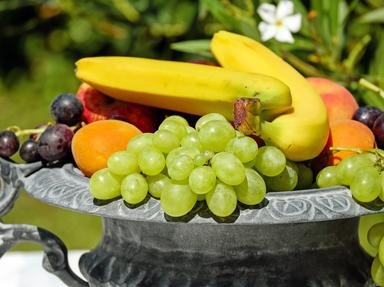Quiz Answer Key and Fun Facts
1. This red berry isn't a cranberry, it's a lingonberry, very popular in Scandinavian cuisine. By which name is it also known?
2. Pictured here is a guava. In 2019, which country was the world's biggest producer of guavas? (You could eat slices of guava with masala paste there.)
3. Of which fruit is the greengage (pictured) a cultivar?
4. Which alcoholic drink is made in Britain using this fruit here? (It might not be a very 'fast' drink.)
5. These aren't pumpkins here, but persimmons, a fruit very popular in Japan, where they are known as kaki. What is the name of a sweet, almost seedless variety of persimmon grown in Israel?
6. This fruit pictured here looks like a pear, but it's actually a type of citrus fruit. If I tell you that its name sounds a bit like the French word for 'apple', can you guess what it is?
7. These purple fruits are mangosteens. As well as being consumed for food, what other uses do they have?
8. This little orange fruit pictured here is a kumquat, a citrus fruit. To which country is it native?
9. These fruits are citrons, also known as etrogim (singular: etrog), and the photo was taken at a market in Israel. The citron is one of the 'four species' that features in a ritual in a certain Jewish festival - but which one?
10. Pictured here are sweet red, orange and yellow bell peppers. They're usually used in savoury cooking, but are they still fruit?
Source: Author
Kankurette
This quiz was reviewed by FunTrivia editor
jmorrow before going online.
Any errors found in FunTrivia content are routinely corrected through our feedback system.
